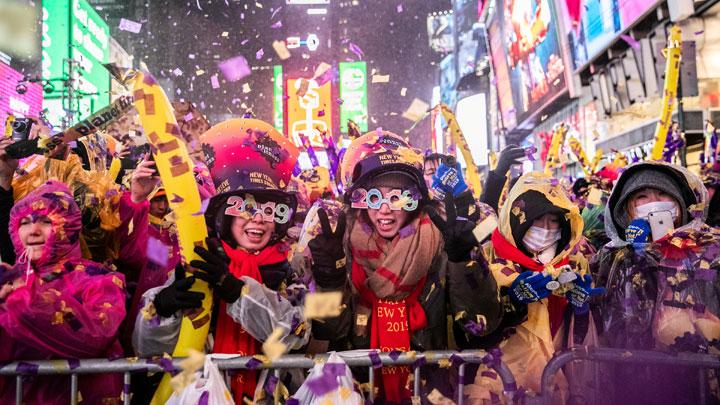TEMPO.CO, Jakarta - The Chinese New Year (CNY) marks the start of the lunar calendar and is celebrated by millions around the globe. Also known as the Lunar New Year, this holiday is more than a mere cultural celebration; the CNY serves as a time to reflect and connect with family members.
Moreover, Chinese culture believes that each new year brings different influences, messages, and prospects for good fortune. It is, therefore, expected that people would be mindful of these horoscopes, hence adjusting their actions accordingly.
Well, whether you’re here to know this year’s zodiac or just curious about the celebration, here’s a brief introduction to the Chinese New Year 2025, citing Time Out Travel, China Highlights, and other sources.
When is the Chinese New Year 2025?
Unlike fixed-date holidays, Chinese New Year’s date is subject to changes each year since it is based on the Chinese Lunar Calendar, which uses both the cycles of the Moon and the Sun. As a result, the Chinese Lunar Calendar is generally 21–51 days behind the Gregorian calendar.
Regardless, as per China Highlights, CNY’s date celebration typically falls between January 21 and February 20. In 2025, Chinese New Year will be celebrated on Wednesday, January 29.
As for the celebrations, they usually last 15 days; they begin on the first day of the new year and conclude with the lantern festivals.
What is the Year 2025's Zodiac?
The Chinese zodiac assigns an animal and its characteristics to each year. The year 2025 is the Year of the Wood Snake, starting from January 29, 2025, and lasting until February 16, 2026. What message does the Year of the Wood Snake have for us?
Snakes themselves are among the prominent animals in Chinese culture. The former, which is the sixth animal in the Chinese zodiac, is often viewed as the symbol of wisdom, knowledge, intelligence, intuition, and creativity, South China Morning Post informs.
In addition, these reptiles also represent prosperity, fertility, longevity, and good fortune. However, since 2025 is symbolized as the Wood Snake, the latter denotes a charming, intelligent, and creative personality, but it is secretive, cunning, and ruthless at the same time.
Therefore, still citing the South China Morning Post, people are encouraged to create a safe space for work and living by practicing good feng shui. This will allow them to feel safe and secure and enhance the year's energy.
Furthermore, China Highlights shares that people whose zodiac signs are Rabbit, Dragon, Horse, Goat, and Rooster, are considered to be the luckiest this year, according to Chinese zodiac predictions. On the other hand, those who were born in the year of the Snake, Tiger, and Pig should brace for impact as they might encounter challenges throughout the year.
Which Countries Celebrate Chinese New Year 2025?
The CNY is a spiritually and culturally important celebration, especially for people in China. It is generally observed as an eight-day public holiday, during which people won’t be working from Chinese New Year's Eve to the seventh day of the new year’s lunar calendar.
Taiwan also recognizes the Lunar New Year as a public holiday, with people enjoying 7 days off. On the other hand, Hong Kong and Macau, which are technically still parts of China, only have 3 days off.
While rooted in Chinese tradition, the CNY is celebrated far beyond China. Singapore, Malaysia, Indonesia, Vietnam, and the Philippines are among the countries that celebrate the Chinese New Year. These Southeast Asian countries generally have only one to three holiday days.
How is Chinese New Year Celebrated?
There are several common traditions Chinese people do during the Chinese New Year celebrations. These practices reflect their readiness to usher in a fresh beginning.
Here’s a look at some of the Chinese New Year celebrations and traditions, citing China Highlights:
1. Cleaning and Decorating the House
Preparations begin days in advance with a thorough cleaning to sweep away bad luck. Houses are adorned with decorations in red, which are symbols of prosperity and happiness, to welcome good fortune. This is why red is often associated with the Lunar New Year since it carries positive energy.
2. Making Offerings to Ancestors
The Chinese New Year serves as a momentum for the community to honor their ancestors by making offerings. This tradition involves visiting the graves of the ancestors and providing an extra space at the dinner table on New Year's Eve.
3. Throwing a Family Reunion Dinner
Family gatherings are one of the highlights of the Lunar New Year. This time of the year is particularly significant for large families, as it provides an opportunity for members from multiple generations to come together for a meal and create cherished memories.
4. Giving Red Envelopes
Exchanging hongbao, or red envelopes filled with money, is one of the most popular Lunar New Year customs. The red color is believed to bring good luck and ward off evil spirits to both the giver and receiver.
5. Watching Lion Dances and Setting Off Firecrackers
Performances, such as lion and dragon dances, are a common component of CNY festivities. However, these are not merely cultural spectacles; rather, these performances are instrumental in attracting good luck and prosperity for the upcoming year.
Moreover, it is customary for the Chinese community to ignite firecrackers. This tradition draws from the story of Nian, a mythical creature that is said to fear the sounds of firecrackers and the color red.
Chinese New Year Traditional Foods
Food plays a starring role during Chinese New Year, with dishes steeped in symbolism and carrying a message of hope or good fortune. Citing China Highlights, Time Out Travel, and Wonderful Indonesia, let’s take a brief journey to discover the delicacies during this festive season:
1. Chinese Dumplings
Dumplings are one of the common Chinese New Year traditional foods, with a history of more than 1,800 years. This particular dish is believed to bring wealth due to its resemblance to Chinese silver ingots.
2. Longevity Noodles
As the name suggests, longevity noodles signify a wish for a long life. The noodles differ from your normal ones as they are usually longer and prepared uncut.
3. Yu Sheng
Chinese culture believes in the auspiciousness of fish. Yu Sheng is among the Chinese New Year traditional foods describing a raw fish salad served with shredded vegetables, like carrots. This meal symbolizes hope for good luck.
4. Nian Gao
Nian gao describes a sticky cake made from glutinous rice. This brown-colored rice cake is believed to bring prosperity.
5. Tang Yuan
Tangyuan, sweet glutinous rice balls, are a must during the Lantern Festival. This cuisine represents unity and happiness.
Editor’s Choice: 6 Ultimate Ways to Celebrate Chinese New Year 2025 in Bali
Click here to get the latest news updates from Tempo on Google News

 3 months ago
72
3 months ago
72












































